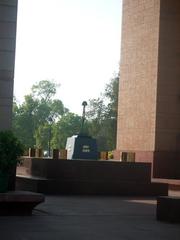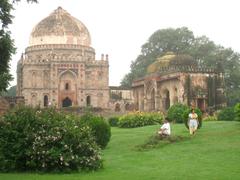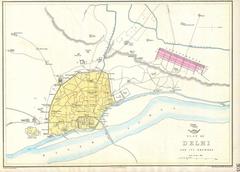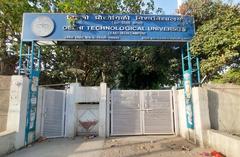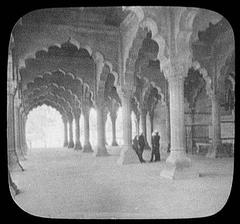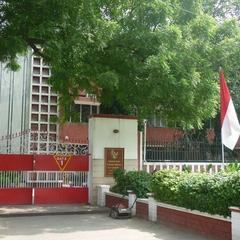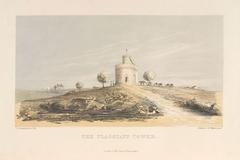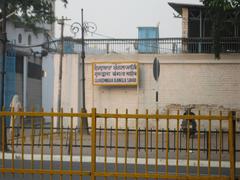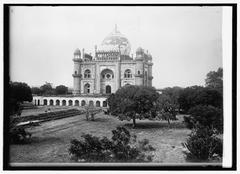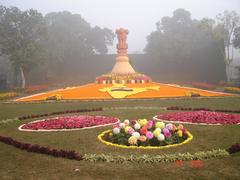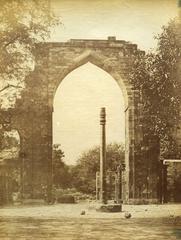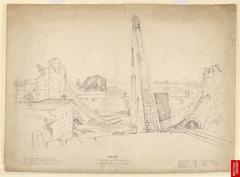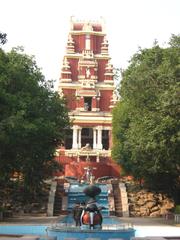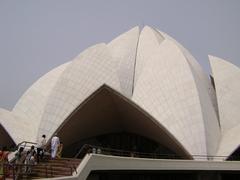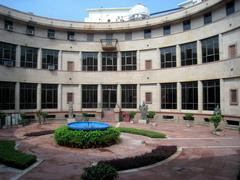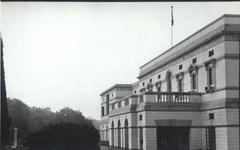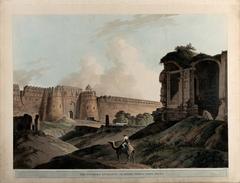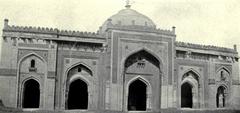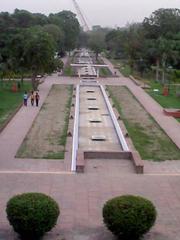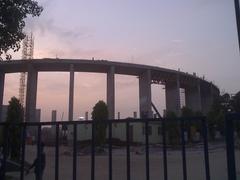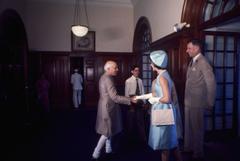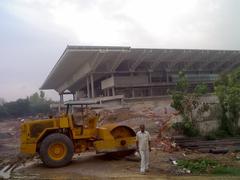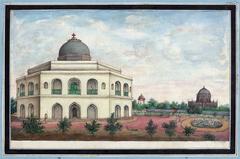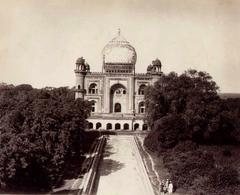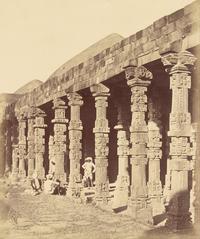
Sunder Nursery Visiting Hours, Tickets, and Comprehensive Visitor Guide to Delhi’s Heritage Park
Date: 15/06/2025
Introduction
Sunder Nursery, a 90-acre urban oasis adjacent to Humayun’s Tomb in New Delhi, stands as a living testament to India’s Mughal heritage and ecological diversity. Originally known as Azim Bagh in the 16th century, Sunder Nursery has evolved from a Mughal pleasure garden to a British botanical center and, following years of neglect, into a vibrant heritage park through the Nizamuddin Urban Renewal Project. Today, it seamlessly integrates restored Mughal monuments, lush gardens, Delhi’s first arboretum, and a dynamic calendar of cultural events, making it a must-visit for history enthusiasts, nature lovers, and families alike. This detailed guide covers Sunder Nursery visiting hours, ticketing, attractions, and tips to help you fully enjoy Delhi’s iconic historical site. (Aga Khan Trust for Culture, Sunder Nursery Official, History to Heritage)
Table of Contents
- Historical Background
- Restoration and Urban Renewal
- Visitor Information (Hours, Tickets, Accessibility)
- Key Attractions and Facilities
- Culture, Ecology, and Events
- Travel Tips & FAQs
- Summary & Useful Links
Historical Background
Mughal Origins and Early History
Founded as Azim Bagh during the Mughal era, Sunder Nursery was designed in the charbagh (four-part) garden style, blending ornamental tombs, water channels, and green spaces. Key surviving monuments include Sunder Burj, Sundarwala Mahal, Lakkarwala Burj, Chotta Bateshewala, and the tomb of Mirza Muzaffar Hussain—each reflecting the architectural finesse and decorative artistry of the Mughal period. (Aga Khan Trust for Culture, History to Heritage)
British Colonial Transformation
In the early 20th century, the British administration developed the site into a horticultural nursery, introducing rare and exotic plants for the greening of New Delhi. The site was renamed after the Sunder Burj tomb within its precincts. (Mapsofindia)
Post-Independence Decline and Restoration
Following independence, Sunder Nursery primarily served as a plant nursery under the Central Public Works Department (CPWD), with its historical and ecological assets suffering neglect. Renewal efforts began in 2007 under the Nizamuddin Urban Renewal Project, led by the Aga Khan Trust for Culture in partnership with the ASI, CPWD, and SDMC. These efforts have transformed Sunder Nursery into a world-class heritage and ecological park. (History to Heritage, Sunder Nursery Official)
Restoration and Urban Renewal
The Nizamuddin Urban Renewal Project
This ambitious initiative restored 15 Mughal-era monuments, including six UNESCO World Heritage Sites, using traditional materials and conservation techniques. Landscape architect Mohammed Shaheer reimagined the site as Delhi’s first arboretum, now home to over 300 tree species, themed gardens, and thriving wildlife habitats. Community engagement, cultural programming, and environmental education are central to the park’s mission. (Wikipedia, Tripoto)
Visitor Information: Sunder Nursery Visiting Hours and Tickets
-
Visiting Hours:
- April–September: 7:00 AM to 7:00 PM (last entry 6:30 PM)
- October–March: 7:00 AM to 6:00 PM (last entry 5:30 PM)
- Open daily, except national holidays.
-
Ticket Prices:
- Indian/SAARC visitors: ₹35–₹50
- Children (5–12 years): ₹15–₹25
- Senior citizens (above 60): ₹15–₹25
- Foreign tourists: ₹100–₹200
- Children under 5 and differently-abled visitors: Free
(Delhi Tourism, Sunder Nursery Official)
-
Booking:
- Tickets are available at the entry gate and on the official website.
-
Accessibility:
- Wheelchair access, barrier-free pathways, and accessible restrooms are available.
- The nearest metro is JLN Stadium (Violet Line, Gate 1).
- Paid parking and e-rickshaws are available.
Key Attractions and Facilities
Heritage Monuments
Explore 20 historic structures, including Sunder Burj, Sunderwala Mahal, Lakkarwala Burj, Chotta Bateshewala, and Mirza Muzaffar Hussain’s Tomb—each beautifully restored within lush gardens. (Delhi Capital, Delhi Tourism)
Themed Gardens & Arboretum
Sunder Nursery is Delhi’s first arboretum, featuring over 300 tree species, rose gardens, bonsai and butterfly gardens, water lily ponds, and ecological zones representing Delhi’s natural habitats. The park’s landscaping supports urban biodiversity and seasonal floral displays. (Sunder Nursery Official)
Biodiversity and Wildlife
The park is a biodiversity hotspot, with 80+ bird species, 60 butterfly species, and native pollinators. Interpretive signage and guided nature walks are available for visitors interested in urban ecology. (Nizamuddin Renewal Environment)
Children’s Play Area and Family Spaces
Natural play areas with sustainable materials, mazes, zip lines, and sandpits ensure a fun and safe experience for children. Family-friendly lawns and picnic spots are available throughout the park. (The Patriot)
Water Features and Tranquil Spaces
Gurgling water channels, reflective ponds, and small lakes echo Mughal garden traditions and provide a tranquil environment for relaxation and wildlife. (Sunder Nursery Official)
Cultural and Educational Venues
The amphitheater and open lawns host concerts, art exhibitions, farmers’ markets, and heritage walks. The park also offers environment and heritage-linked educational programs for all age groups. (The Patriot)
Visitor Facilities
- Wheelchair availability and accessible pathways
- Clean restrooms and drinking water stations
- Food stalls and cafés
- Ample parking and public transport connectivity
- Information kiosks and detailed maps
Culture, Ecology, and Events
Cultural Festivals and Performances
Sunder Nursery is a hub for annual festivals such as the Jahan-e-Khusrau Sufi Music Festival and Sufi Heritage Festival, featuring Sufi music, poetry, storytelling, and art. The park also hosts the Kathakar International Storytellers Festival, candlelight concerts, and weekend organic markets supporting local artisans and farmers. (Curly Tales, Allevents.in, The Dilli)
Ecological Significance
As an urban ecological corridor, Sunder Nursery supports Delhi’s original habitats, bird and pollinator species, and sustainable landscape management through rainwater harvesting and native planting. Environmental education is at the heart of park programming, with regular workshops and guided walks. (Nizamuddin Renewal Environment, Urbandesignlab)
Community Engagement
The park fosters volunteerism, citizen science, and inclusive access. It offers membership programs (“Friends of Sunder Nursery Heritage Park”) for regular visitors and hosts private events, weddings, and corporate retreats in its scenic venues. (Sunder Nursery Official)
Travel Tips & FAQs
Tips for Visitors
- Best time to visit: October–March for pleasant weather and vibrant flora/fauna.
- Photography: Early morning and festival days offer great photo opportunities.
- Eco-conscious behavior: Follow park guidelines, avoid littering, and respect wildlife.
- Event schedules: Check the official website’s events page for updates.
- Transport: Use metro or public transport to avoid parking congestion.
Frequently Asked Questions
Q: What are the Sunder Nursery visiting hours?
A: 7:00 AM to 7:00 PM (April–September), 7:00 AM to 6:00 PM (October–March).
Q: How much is the entry ticket?
A: ₹35–₹50 for Indian adults, ₹15–₹25 for children/seniors, ₹100–₹200 for foreign tourists. Children under 5 and differently-abled visitors enter free.
Q: Can I book tickets online?
A: Yes, via the official website.
Q: Is Sunder Nursery wheelchair accessible?
A: Yes, with ramps, wide pathways, and accessible restrooms.
Q: Are guided tours available?
A: Yes, both heritage and biodiversity walks are offered.
Q: Are pets allowed?
A: Pets are generally not permitted, except for designated pet-friendly trails.
Q: Can I bring food?
A: Yes, picnic areas are available, but outside food should be managed responsibly.
Summary
Sunder Nursery is a shining example of how heritage conservation, ecological restoration, and community engagement can transform an urban space. From its Mughal origins and British botanical legacy to its current status as a world-class heritage park, the site offers a rich blend of architectural marvels, tranquil gardens, vibrant festivals, and sustainable practices. Whether you’re seeking a peaceful escape, cultural enrichment, or an educational outing, Sunder Nursery is an essential stop in any Delhi itinerary.
Plan your visit today via the official Sunder Nursery website and download the Audiala app for guided tours, maps, and event updates.
Useful Links & References
- Aga Khan Trust for Culture
- Sunder Nursery Official Website
- History to Heritage
- Mapsofindia
- Wikipedia
- Nizamuddin Renewal Environment
- Delhi Tourism
- Curly Tales
- The Patriot
- Urbandesignlab
- Tripoto
- The Dilli
- Delhi Capital
- Allevents.in
- Travelseewrite
- Travellerscribe



